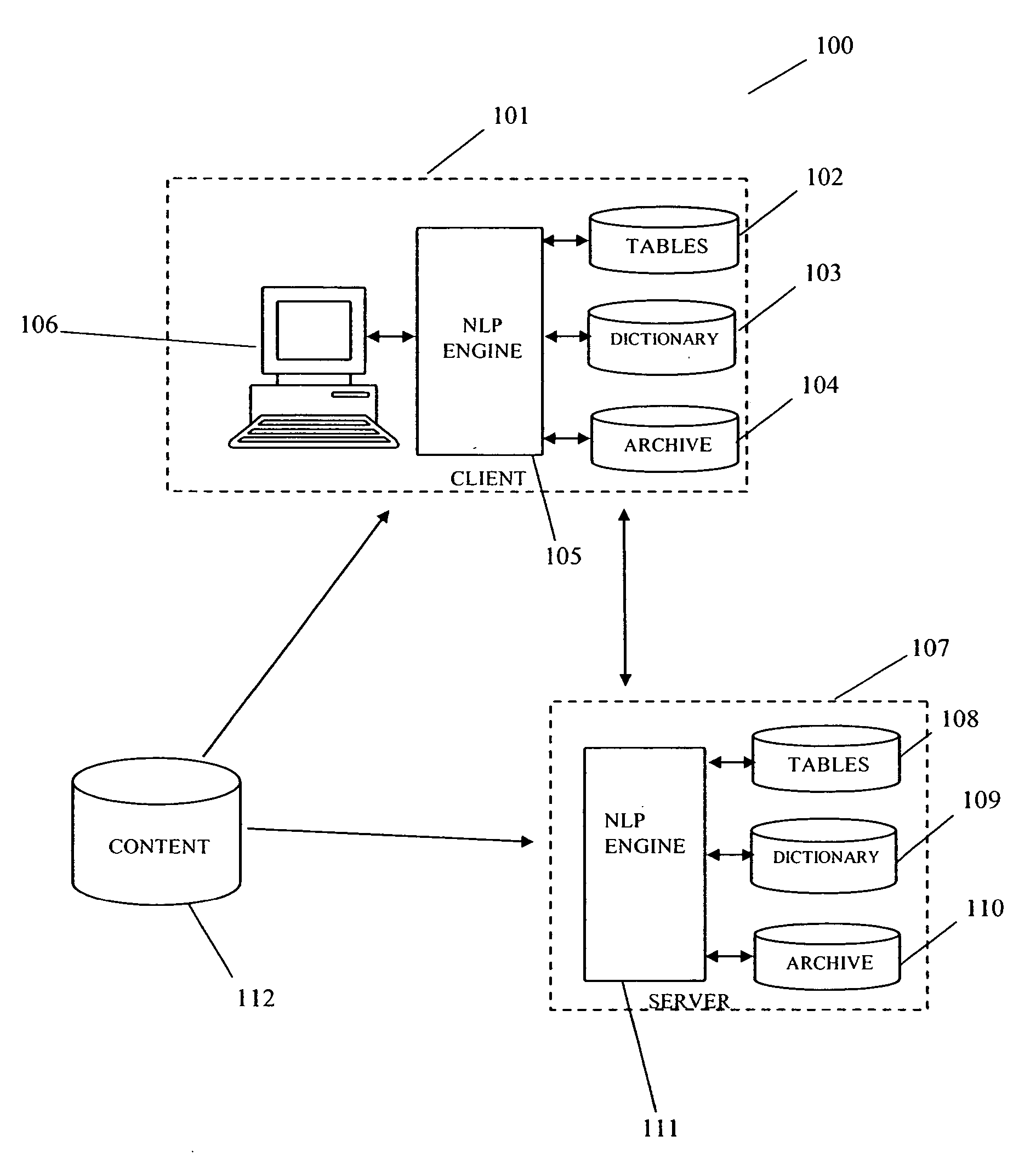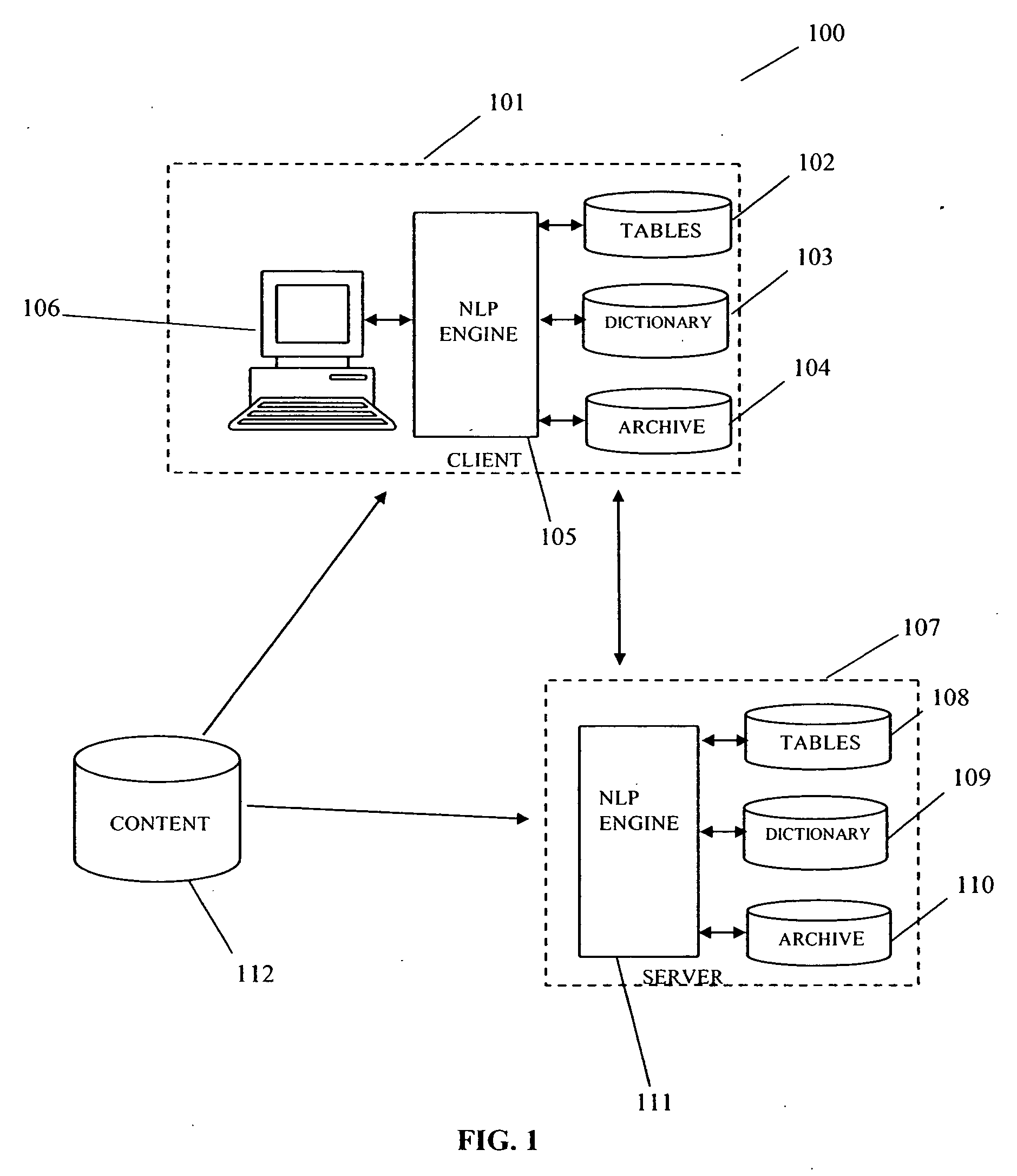Dynamic lexicon
a dynamic lexicon and lexicon technology, applied in the field of real-time information processing, can solve the problems of affecting the retrieval efficiency of newly inserted documents, the inability to update lexical data to account for the insertion of new documents into archives, and the large information set, etc., to achieve the effect of maintaining the currency of terms
- Summary
- Abstract
- Description
- Claims
- Application Information
AI Technical Summary
Benefits of technology
Problems solved by technology
Method used
Image
Examples
Embodiment Construction
[0018] The invention is directed to a content management system wherein terms are represented by unique identifiers, or tokens. As a new word is encountered by the NLP engine it is assigned a new token identifier. These token identifiers for the words are maintained from generation to generation of the lexical tables. So any specific word such as ‘cat’ always has the same token identifier over time, and as well, at all client sites. This rule applies also to word combinations that are reduced to a single token, such as ‘United States of America.
[0019] Turning now to the Figures, FIG. 1 shows a block diagram of a system for content management 100 according to the invention. The invented system includes a server 107 and at least one client 101. Residing on the server 107 are an NLP engine 111, an archive 110, a dictionary of terms 109 and a lexicon comprising a plurality of lexical tables 108. Described in greater detail below, the lexicon includes statistical and semantic data regar...
PUM
 Login to View More
Login to View More Abstract
Description
Claims
Application Information
 Login to View More
Login to View More - R&D
- Intellectual Property
- Life Sciences
- Materials
- Tech Scout
- Unparalleled Data Quality
- Higher Quality Content
- 60% Fewer Hallucinations
Browse by: Latest US Patents, China's latest patents, Technical Efficacy Thesaurus, Application Domain, Technology Topic, Popular Technical Reports.
© 2025 PatSnap. All rights reserved.Legal|Privacy policy|Modern Slavery Act Transparency Statement|Sitemap|About US| Contact US: help@patsnap.com



